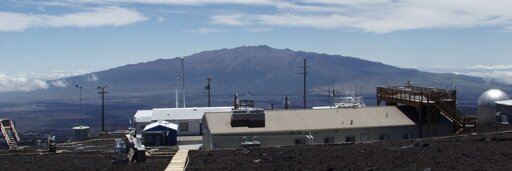The Trump administration’s proposed 2026 budget for the U.S. National Oceanic and Atmospheric Administration (NOAA) cuts funding for several critically important national laboratories and observatories. On the chopping block is Mauna Loa Observatory in Hawai‘i, which has been recording atmospheric carbon data every day for nearly 70 years. Mauna Loa Observatory sits atop a volcano on the Big Island of Hawai‘i. At an elevation of 3,397 meters (11,135 feet), it rises above more polluted air near the ground to collect atmospheric data with minimal influence from human activity and vegetation. Mauna Loa has been collecting atmospheric carbon dioxide data since 1958, the longest continuous record of atmospheric CO2 levels in the world. Famously, the observatory provided data for the Keeling Curve, a graph that shows annual CO2 levels for the past seven decades. The graph starts in 1958, when the observatory recorded atmospheric CO2 concentrations of 315 parts per million (ppm). By 2024, that number had steadily climbed to nearly 427 ppm. The last time Earth experienced that much CO2 was roughly 3 million years ago, when sea levels were more than 24 m (80 ft) higher than today. NOAA operates three other observatories that collect CO2 data to create a global picture of atmospheric CO2 trends. All four observatories will be closed if President Trump’s budget is adopted. In all, more than a dozen observatories, national labs and institutes are on the chopping block in the budget. The facilities monitor extreme weather events and air pollution, information that can…This article was originally published on Mongabay
From Conservation news via this RSS feed


